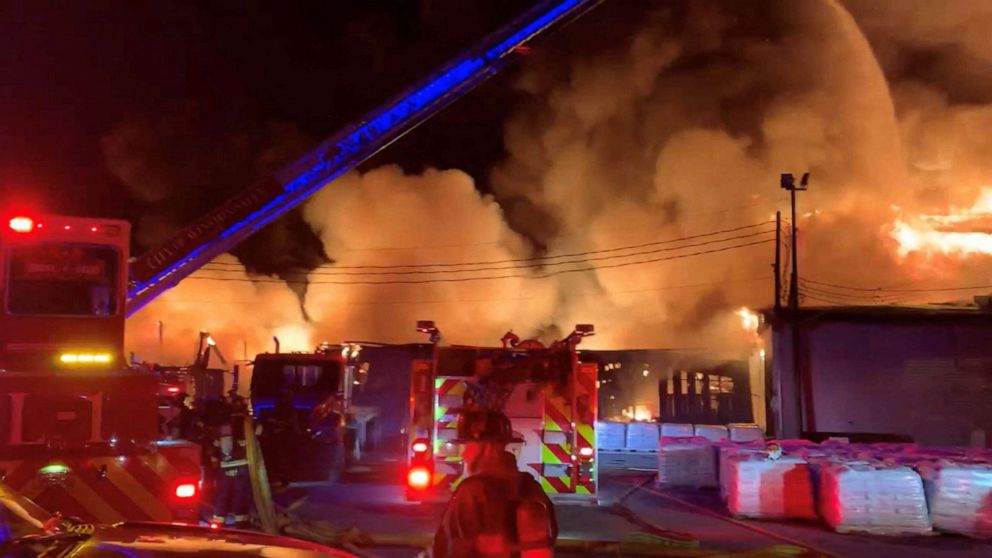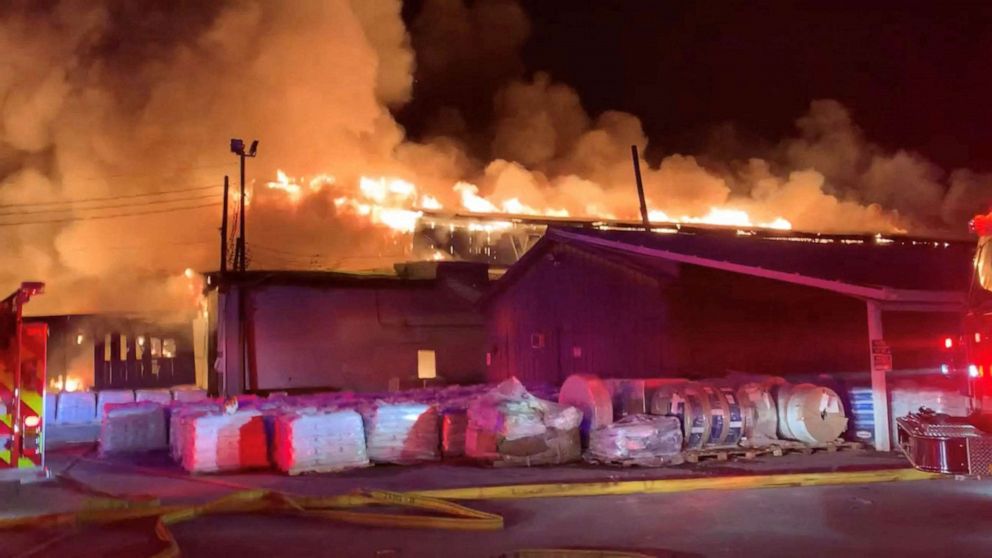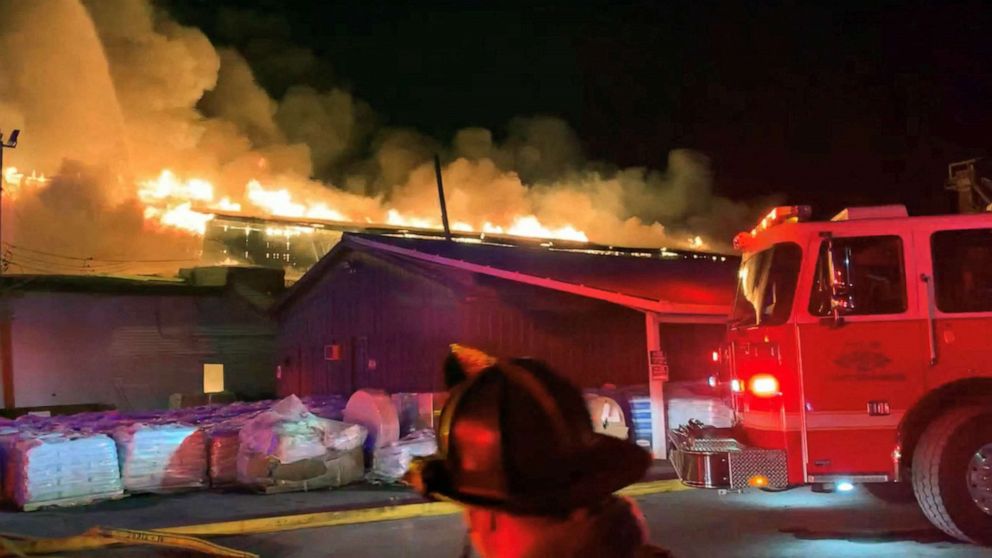Blaze at North Carolina fertilizer plant packed with 600 tons of ammonium nitrate still burning
The blaze started Monday night at the Weaver Fertilizer Plant in Winston-Salem.
A fire at a North Carolina fertilizer plant packed with nearly 600 tons of highly explosive ammonium nitrate continued to burn on Wednesday, forcing roughly 6,500 residents in the immediate area to remain out of their homes for at least another night, officials said.
The blaze at the Weaver Fertilizer Plant in the north ward of Winston-Salem ignited Monday night and quickly spread throughout the facility, triggering multiple explosions, sending noxious gas into the air and casting a haze over city of more than 250,000 people.

No injuries have been reported.
On Monday, city officials urged people living within a mile of the plant to evacuate for 48 hours, but on Wednesday they said meeting the deadline is out of reach.
Winston-Salem Fire Chief William "Trey" Mayo urged residents under voluntary evacuation not to go back to their home for at least one more night.
"We have too many unknowns," Mayo said during a news conference attended by North Carolina Gov. Roy Cooper. "We appreciate everybody's patience, but, again, we strongly recommend everybody being out of that one-mile radius around the plant."
Firefighters have been kept back from the burning facility due to the threat of explosions, Mayo said.
Mayo said crews were able to conduct reconnaissance with a police robot Wednesday morning on a railcar next to the facility that he said contains about 90 tons of ammonium nitrate. Officials had worried the railcar had heated to a dangerous level, but they determined that is not the case, Mayo said.
Another 500 tons of ammonium nitrate is in a storage building at the burning plant and an additional 5,000 tons of finished fertilizer was at the site.
"At the beginning of this incident, there was enough ammonium nitrate on hand for this o be one of the worst explosions in U.S. history," Mayo said.
Rain is expected in the Winston-Salem area on Thursday night and into Friday, a forecast Mayo called a "generally positive thing" for the firefighting efforts.
The fire was reporter at about 6:45 p.m. Monday and fire crews battled the blaze for about 90 minutes before conditions grew too hazardous to keep firefighters at the scene, Mayo said.
Stressing how volatile the situation is, Mayo referenced the April 17, 2013, ammonium nitrate explosion at the West Fertilizer Company in West, Texas, that killed 15 people and leveled 150 buildings.
"The quantity of ammonium nitrate they had on hand was 240 tons. When this fire began last night, we had 600 tons on site," Mayo said. "So, if that doesn't convey the gravity of this situation and how serious folks need to take it, I don't know how else to verbalize that."

Fire officials said water was still being routed to an area of the facility where the ammonium nitrate is being stored in an attempt to keep that section under 400 degrees, which they believe will prevent explosions.
Mayo said firefighters reported hearing several "mini explosions" before they had to retreat.
Mayo said fire officials have been using drones to monitor the blaze and are hoping to send up a fire department hazmat specialist in a North Carolina Highway Patrol helicopter on Wednesday to do more reconnaissance on the conflagration.
He said five strike teams were in position to move in and resume battling the fire as soon as conditions improve, but he added that most first responders were being kept out of a the 1-mile radius danger zone for the time being.
Mayo said about 2,500 homes are within a mile radius of the plant and that about 6,500 people living within the area have been advised to evacuate.

Mayo said environmental teams continue monitoring the air outside the evacuation zone. He said the threshold for air conditions immediately dangerous to life and health is 100 parts per million of nitrous oxide, and that crews are recording readings of about 65 parts per million of nitrous oxide.
The fire chief said that while there was immediate danger to life and health due to smoke and fumes spewing from the plant, said Mayo, he said people with respiratory issues should stay inside with their doors and windows closed.
Mayo said fire department officials last inspected the plant for code violations on Dec. 21 and that no violations were found.




